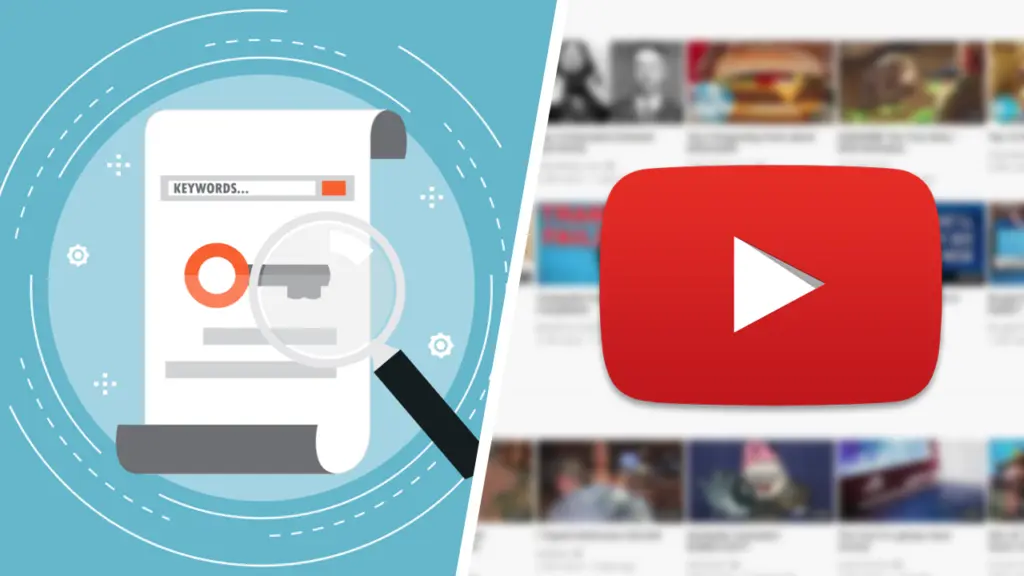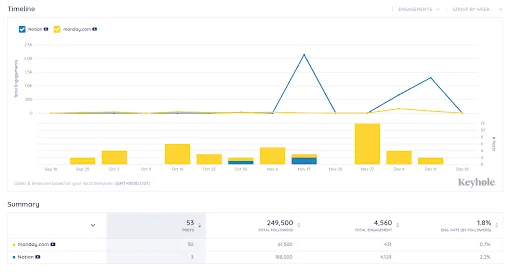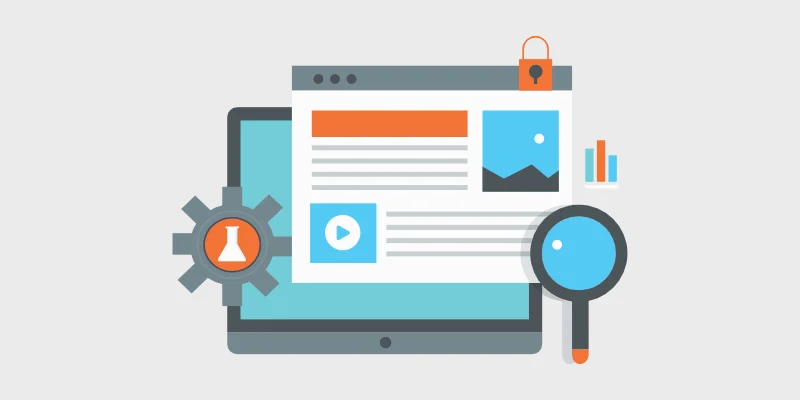Generating tags is a crucial step in optimizing your YouTube videos for maximum visibility and success. Tags help YouTube’s algorithm understand and categorize your content, making it easier for viewers to find your videos.
However, many YouTube creators struggle with coming up with effective tags that can boost their video’s visibility and reach. In this ultimate guide, we will unlock the secrets to generating tags that will skyrocket your video’s success on YouTube.
Whether you are a beginner or an experienced creator, this guide will provide you with the tools and strategies you need to take your YouTube channel to the next level.
The power of tags on YouTube
Tags play a crucial role in the success and visibility of your YouTube videos. They help YouTube’s algorithm understand and categorize your content, making it easier for viewers to find your videos. Effective tags can significantly boost your video’s visibility and reach, ultimately increasing your chances of attracting more viewers and subscribers to your channel. Here are some reasons why tags hold immense power on YouTube:
Here are some reasons why tags hold immense power on YouTube:
1. Improved discoverability:
Tags act as keywords that describe the content of your video. When viewers search for specific topics or keywords on YouTube, videos with relevant tags have a higher chance of appearing in the search results. By using relevant and popular tags, you increase your video’s discoverability and reach a wider audience.
2. Targeting specific audiences:
YouTube allows creators to target specific audiences through tags. By using tags that are relevant to your target audience’s interests and preferences, you can attract viewers who are more likely to engage with and enjoy your content. Understanding your audience and using accurate tags can help you connect with your desired viewership.
3. Niche identification:
Tags can help identify your video within a particular niche or category. When viewers are interested in a specific niche, they often search using tags related to that niche. By incorporating niche-specific tags in your videos, you increase your chances of attracting viewers who are specifically looking for content within that niche. This can lead to increased engagement and loyalty from a dedicated audience.
4. Collaboration opportunities:
Tags can also facilitate collaboration opportunities with other creators. When creators collaborate on a video, they can use common tags to make their videos more discoverable to both audiences. By using collaborative tags, you can cross-promote each other’s content and potentially gain new subscribers from each other’s audiences.
5. Trend identification:
YouTube’s algorithm considers trending and popular tags to determine the relevancy and popularity of a video. By keeping an eye on trending tags within your niche, you can create content that aligns with current trends and potentially gain more visibility and engagement. Staying up-to-date with trending tags can help you stay ahead of the curve and attract a larger audience.
In conclusion, tags hold immense power on YouTube as they play a critical role in improving discoverability, targeting specific audiences, identifying your niche, facilitating collaborations, and aligning with current trends. By understanding the importance of tags and using them strategically, you can unlock the full potential of your YouTube channel and achieve success in terms of views, subscribers, and engagement.
Understanding the importance of relevant keywords
When it comes to generating tags for your YouTube videos, understanding the importance of relevant keywords is key. Tags act as keywords that describe the content of your video and play a significant role in improving discoverability and reaching a wider audience. Here are a few reasons why relevant keywords are crucial when it comes to tagging your videos:
Here are a few reasons why relevant keywords are crucial when it comes to tagging your videos:
1. Improved Searchability:
When viewers search for specific topics or keywords on YouTube, videos with relevant tags have a higher chance of appearing in the search results. By using accurate and popular keywords as tags, you increase your video’s discoverability and make it easier for viewers to find your content.
2. Targeting Your Audience:
By using relevant keywords that align with your target audience’s interests and preferences, you can attract viewers who are more likely to engage with and enjoy your videos. Understanding your audience and using accurate tags can help you connect with your desired viewership and build a loyal following.
3. Niche Identification:
Tags can help identify your video within a particular niche or category. Viewers who are interested in a specific niche often search using tags related to that niche. By incorporating niche-specific keywords as tags, you increase your chances of attracting viewers who are specifically looking for content within that niche, leading to increased engagement and loyalty.
4. Collaboration Opportunities:
Relevant keywords can also facilitate collaboration opportunities with other creators. When creators collaborate on a video, they can use common keywords as tags to make their videos more discoverable to both audiences. By using collaborative keywords, you can cross-promote each other’s content and potentially gain new subscribers from each other’s audiences.
5. Staying on Trend:
By keeping an eye on trending keywords within your niche, you can create content that aligns with current trends and potentially gain more visibility and engagement. Staying up-to-date with trending keywords can help you stay ahead of the curve and attract a larger audience.
In conclusion, understanding the importance of relevant keywords when generating tags for your YouTube videos is crucial. By using accurate and popular keywords, you can improve searchability, target your audience, identify your niche, facilitate collaborations, and stay on trend. Taking the time to research and select relevant keywords as tags can significantly boost the success of your YouTube channel in terms of views, subscribers, and engagement.
Read Also:
- The Ultimate Guide to Generating Acronyms
- Top 10 Username Generators for Your Online Persona
- Unlock Instagram Reels Size Mastery for Outstanding Videos
- 10 Steps to Validate Twitter Card & Boost Engagement
How to generate effective tags for your YouTube videos
Generating effective tags for your YouTube videos is crucial to improve discoverability and reach a wider audience. Here are some tips to help you generate relevant and impactful tags:
Here are some tips to help you generate relevant and impactful tags:
1. Research:
Start by researching popular and trending keywords within your niche. Use keyword research tools, YouTube search suggestions, and competitor analysis to identify relevant keywords that are frequently searched by your target audience. This will help you understand what type of content people are looking for and give you insights into popular keywords to include in your tags.
2. Be Specific:
Avoid using generic or broad tags that have high competition. Instead, focus on specific keywords that accurately describe the content of your video. For example, if your video is about vegan recipes, use tags like “vegan recipes,” “plant-based meals,” or “vegan cooking tips” rather than generic tags like “food” or “cooking.”
3. Long-Tail Keywords:
Incorporate long-tail keywords in your tags. Long-tail keywords are more specific phrases or queries that have lower search volume but higher relevance. These keywords can help you target a niche audience that is more likely to engage with your content. For example, instead of using a broad tag like “fitness,” use a long-tail keyword like “home workouts for beginners.”
4. Use Variations:
Include variations of your primary keywords in your tags. This will give you more opportunities to appear in different searches. For example, if your primary keyword is “healthy snacks,” include variations like “quick and easy healthy snacks” or “healthy snack ideas.”
5. Mix Popular and Niche Keywords:
Strike a balance between using popular keywords and niche-specific keywords. Popular keywords will help you reach a wider audience, while niche-specific keywords will attract viewers who are specifically interested in your content. Use a combination of both to maximize discoverability.
6. Limited Number of Tags:
YouTube allows you to add up to 500 characters in your tags, but it is not necessary to use all of them. Focus on quality rather than quantity. Choose the most relevant and impactful tags that accurately describe your video. Adding too many tags may dilute their effectiveness.
7. Monitor and Adapt:
Keep an eye on your video’s performance and tweak your tags accordingly. Analyze how your videos are ranking in search results and the engagement they receive. If you notice certain tags are not performing well, consider replacing them with more effective keywords.
Remember, tags are just one aspect of optimizing your YouTube videos. Combine them with compelling titles, engaging thumbnails, and high-quality content to maximize your chances of success on YouTube.
Utilizing long-tail keywords for maximum visibility
Long-tail keywords can play a crucial role in maximizing the visibility of your YouTube videos. These specific and targeted phrases or queries may have lower search volume but higher relevance, helping you reach a niche audience that is more likely to engage with your content. Here are some tips for utilizing long-tail keywords effectively:
Here are some tips for utilizing long-tail keywords effectively:
1. Research:
Conduct thorough research to identify long-tail keywords that are relevant to your niche and frequently searched by your target audience. Utilize keyword research tools, YouTube search suggestions, and competitor analysis to gather insights into the specific phrases or queries that your audience is using.
2. Be Specific:
Incorporate long-tail keywords in your video titles, descriptions, and tags. Clearly describe the content of your video using specific and detailed phrases that accurately portray what viewers can expect from your content. For example, if your video is about makeup tutorials for beginners, include long-tail keywords like “easy makeup tutorials for beginners” or “step-by-step makeup tutorials for beginners.”
3. Solve Specific Problems:
Tailor your content towards solving specific problems or addressing niche topics within your niche. By using long-tail keywords that address these specific problems or topics, you can attract viewers who are actively searching for solutions or information about these subjects.
4. Answer Questions:
Long-tail keywords often take the form of questions or queries. By incorporating these question-based keywords into your video content, you can attract viewers who are seeking answers or explanations. For example, if your video is about home gardening, include long-tail keywords like “how to grow tomatoes in a small space” or “best practices for organic gardening at home.”
5. Mix with broader keywords:
While long-tail keywords are important for niche targeting, it’s also beneficial to include broader keywords in your optimization strategy. By combining long-tail keywords with broader keywords, you can reach a wider audience while still capturing the attention of viewers interested in specific topics.
6. Testing and Optimization:
Monitor the performance of your videos and analyze how different long-tail keywords impact their visibility and engagement. Experiment with variations of long-tail keywords, track the results, and make adjustments accordingly to optimize your video’s discoverability.
Remember, the use of long-tail keywords should be integrated into a holistic optimization approach, including compelling titles, high-quality content, engaging thumbnails, and other SEO strategies. By leveraging the power of long-tail keywords, you can maximize the visibility of your YouTube videos and attract a highly engaged audience.
The role of competitor analysis in tag generation
Competitor analysis plays a significant role in generating tags for your YouTube videos. By conducting thorough research on your competitors, you can gain valuable insights into the keywords and tags they are using to attract viewers and engage with their content. Here are some ways competitor analysis can help in tag generation:
Here are some ways competitor analysis can help in tag generation:
1. Identify relevant keywords:
By analyzing your competitors’ videos, you can identify the keywords and tags they are using that are relevant to your niche. This can provide you with a list of potential tags to use in your own videos.
2. Discover popular tags:
Competitor analysis allows you to uncover the tags that are generating high visibility and engagement for your competitors. By incorporating these popular tags into your own videos, you increase the chances of reaching a wider audience and attracting more viewers.
3. Analyze keyword combinations:
By studying your competitors’ tags, you can identify keyword combinations that are effective in attracting viewers. This can help you brainstorm tag ideas and come up with unique combinations that set your videos apart from the competition.
4. Stay updated with trends:
Competitor analysis helps you stay updated with the latest trends and shifts in your niche. By keeping an eye on your competitors’ videos and the tags they are using, you can adjust your tag generation strategy accordingly to stay ahead of the curve and remain relevant to your audience.
5. Leverage gaps and opportunities:
Analyzing your competitors’ tags can reveal gaps and opportunities in the market. By identifying keywords and tags that your competitors may be overlooking, you can capitalize on these gaps and position your videos in a way that attracts viewers who are searching for specific content within your niche.
6. Improve engagement and discoverability:
By incorporating tags and keywords used by successful competitors, you increase the chances of your videos appearing in search results and suggested video sections. This can lead to higher engagement, increased views, and a growing subscriber base.
Remember, competitor analysis should be a continuous process as trends and competition within your niche can change over time. By regularly analyzing your competitors’ tags and adjusting your tag generation strategy accordingly, you can stay ahead of the game and unlock success on YouTube.
Organizing and optimizing tags for better search results
Once you have generated a list of relevant tags for your YouTube videos through competitor analysis, it is important to organize and optimize these tags to improve your search results. By following these strategies, you can increase the visibility and discoverability of your videos, ultimately driving more traffic and engagement to your YouTube channel.
By following these strategies, you can increase the visibility and discoverability of your videos, ultimately driving more traffic and engagement to your YouTube channel.
1. Categorize your tags:
Organize your tags into relevant categories or themes. This will help you easily identify which tags to use for specific types of videos. For example, if you have a beauty channel, you can categorize your tags into makeup, skincare, haircare, etc. This categorization will make it easier for viewers to find specific content within your channel and for search algorithms to understand the relevance of your videos.
2. Prioritize high-impact tags:
Not all tags are created equal. Some tags have higher search volumes and are more competitive, while others may be more specific and niche. Prioritize using tags that have a good balance of high search volume and relevance to your content. These high-impact tags will increase the chances of your videos appearing in search results and attracting more viewers.
3. Long-tail keywords:
Incorporate long-tail keywords into your tags. Long-tail keywords are longer and more specific phrases that are often less competitive but highly targeted. They can help your videos rank higher in search results for more specific search queries. For example, instead of using a generic tag like “cooking,” you can use a long-tail keyword like “easy weeknight dinner recipes” to target a specific audience looking for that type of content.
4. Use variations and synonyms:
Don’t be afraid to use variations and synonyms of your tags. This will expand the reach of your videos and increase the likelihood of appearing in different search queries. For example, if one of your tags is “healthy breakfast ideas,” you can also use variations like “nutritious breakfast recipes” or synonyms like “healthful morning meal suggestions.”
5. Add specific location tags:
If your content is location-specific, consider adding specific location tags. This will help your videos appear in search results for users searching for content related to that particular location. For example, if you have a travel channel, you can use tags like “best beaches in Bali” or “top attractions in New York City” to target viewers interested in travel content specific to those locations.
6. Experiment and analyze:
The process of organizing and optimizing tags should be an ongoing experiment. Monitor the performance of your videos and track which tags are generating the most views, engagement, and click-throughs. Use YouTube analytics tools to analyze the effectiveness of your tags and make adjustments accordingly. Continuously tweaking and refining your tag strategy will help you stay relevant, adapt to changes in search trends, and attract a growing audience.
By organizing and optimizing your tags, you can significantly improve your search results on YouTube. This will increase the visibility and discoverability of your videos, helping you unlock success and growth on the platform. Remember to regularly analyze and update your tag strategy to stay ahead of the competition and capture the attention of your target audience.
Experimenting and refining your tag strategy
To truly unlock success on YouTube and continually improve your search results, it is essential to experiment with and refine your tag strategy. By continuously tweaking and adapting your approach, you can stay ahead of the competition and capture the attention of your target audience. Here are some key considerations when experimenting with your tag strategy:
Here are some key considerations when experimenting with your tag strategy:
1. Test different variations:
Don’t be afraid to test out different variations of tags to see what works best for your content. This can include using synonyms, alternative phrasings, or different combinations of keywords. By experimenting with variations, you can discover which tags resonate most with your audience and drive the most engagement.
2. Monitor analytics:
Utilize YouTube analytics tools to monitor the performance of your videos and track the effectiveness of your tags. Pay attention to metrics such as views, watch time, audience retention, and click-through rates. This data will provide valuable insights into how well your tag strategy is performing and help inform future refinements.
3. Analyze competition:
Keep a close eye on your competitors and analyze the tags they are using for their videos. This can provide inspiration and help you identify new tags to incorporate into your own strategy. Additionally, observing the success of competitor tags can give you a sense of what is resonating with viewers in your niche.
4. Stay updated with trends:
Stay up-to-date with the latest trends and topics relevant to your content. Incorporating popular and timely tags into your videos can help capitalize on trending search queries and attract a wider audience. Regularly monitoring industry news, social media platforms, and keyword research tools can provide valuable insights into current trends.
5. Refine over time:
Refining your tag strategy is an ongoing process. As you gather more data and insights from analytics, make adjustments to your tags based on what is working and what isn’t. Remember to take a data-driven approach and prioritize tags that are generating the most views, engagement, and click-throughs.
6. Seek feedback:
Don’t hesitate to seek feedback from your viewers or engage with your audience to understand what they are looking for. Ask for their thoughts and suggestions on your tag strategy or specific tags you are using. This can provide valuable insights and help you tailor your tags to better align with audience expectations.
7. Be open to innovation:
As the YouTube platform and audience preferences evolve, be open to adopting new approaches and experimenting with innovative tag strategies. Stay on top of emerging trends and consider incorporating new types of tags or techniques, such as hashtagging or leveraging YouTube’s search suggestions.
Remember, experimenting and refining your tag strategy is an ongoing process that requires continuous attention and adaptation. By staying proactive and responsive to audience preferences and search trends, you can maximize the visibility, discoverability, and ultimately the success of your YouTube videos.
Monitoring and adjusting your tags for continued success
Once you have implemented your tag strategy on YouTube, the work doesn’t stop there. Monitoring and adjusting your tags are crucial steps to ensure continued success in terms of visibility and engagement. By regularly evaluating the performance of your tags and making necessary adjustments, you can stay ahead of the evolving landscape and maintain relevance with your target audience. Here are some key considerations when it comes to monitoring and adjusting your tags:
Here are some key considerations when it comes to monitoring and adjusting your tags:
1. Monitor analytics:
Utilize YouTube analytics tools to track the performance of your videos and examine the impact of your tags. Keep a close eye on metrics such as views, watch time, audience retention, click-through rates, and engagement. This data will provide valuable insights into the effectiveness of your tag strategy and help identify areas for improvement.
2. Analyze search traffic:
Pay attention to the search terms that are driving traffic to your videos. Are there specific keywords or phrases that consistently lead viewers to your content? Identify these high-performing search terms and refine your tag strategy to align with them. This will increase the visibility of your videos to users actively searching for related content.
3. Stay updated with trends:
Regularly stay informed about the latest trends and topics in your niche. As audience interests and search patterns evolve, it is essential to adapt your tags accordingly. Monitor industry news, social media platforms, and keyword research tools to identify emerging trends and incorporate relevant tags into your videos. This will help attract a wider audience and capitalize on popular search queries.
4. Experiment with new variations:
Don’t be afraid to experiment with new tag variations and combinations. Testing different keywords, synonyms, and alternative phrasings can help you discover tags that resonate better with your audience. Through continuous experimentation, you can refine your tag strategy and optimize its effectiveness over time.
5. Seek audience feedback:
Engage with your viewers and encourage them to provide feedback on your tag strategy. Ask for their thoughts on the tags you are using or if they have any suggestions for improvement. This direct feedback can provide valuable insights and help you tailor your tags to better align with audience expectations. Consider creating polls, surveys, or interactive elements within your videos to gather feedback effectively.
6. Stay competitive:
Keep an eye on your competitors and analyze their tag usage. Understanding the tags they are incorporating into their videos can give you inspiration and ideas for your own tag strategy. However, it is important to differentiate yourself by adding unique and relevant tags that will set your content apart from the competition.
7. Stay informed about platform updates:
YouTube regularly introduces updates and changes to its algorithm and search functionality. Stay informed about these updates to ensure your tag strategy remains in line with current best practices. This may involve adjusting your tags to align with new features, trends, or ranking factors introduced by YouTube.
Remember, monitoring and adjusting your tags is an ongoing process that requires active engagement and adaptability. By staying vigilant and responsive to changes in audience preferences, search trends, and platform updates, you can maximize the visibility and success of your YouTube videos.
Conclusion
Using tags effectively is a crucial aspect of achieving success on YouTube. It allows your videos to be discovered by the right audience and increases visibility and engagement. As we have discussed throughout this guide, generating tags that accurately describe your content and align with search terms is essential.
In conclusion, tags play a vital role in the overall success of your YouTube channel. Embrace the power of tags, adapt to changes, and consistently refine your strategy to achieve maximum visibility and engagement. With the right tag strategy, you can propel your YouTube channel towards success and reach new heights in the dynamic world of online video content.